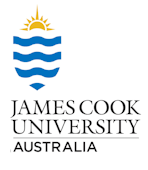I am an anthropologist and I like to see myself as a storyteller who can give a voice to those who have lost it. Every person is like a puzzle, somewhere there is a piece missing and it is my job to find it.
After my graduation in cultural heritage and anthropology I participated to Prof. Cattaneo and LABANOF's osteology school. Then, I had the chance to enhance my experience in the Forensic Anthropology laboratory in the University of Teesside under the supervision of Prof. Tim Thompson. There I improved my knowledge in the creation and interpretation of osteobiographies using the skeletal collection at Teesside University based on known methodologies about sex, age, stature estimation and paleopathology. I developed critical research skills undertaking a range of activities such as: Forensic Chemistry, Blood pattern analysis, attendance at post-mortem examination, tutoring in Bio-Anthropology 1st year Anatomy laboratory and helping the student with their final academic research. Furthermore, I was taught a range of analytical techniques such as spectrophotometer, XRF, FTIR-ATR, Pico Scan, FARO arm laser scanner and EinscanPro for which I used different software. For each one, I received the appropriate H&S, risk, ethics and technical training necessary to perform my work safely and with due care. Then, I was hired as temporary research associate by University of Cagliari to conduct research on burnt bone samples from the Sardinian Neolithic archaeological site of Forru de is Sinzurreddus (Pau, OR).
The gained experience gave me the opportunity of a PhD position in co-tutelle agreement between University of Cagliari and James Cook University which I have started in October 2019 with the project "A new lease on life: using advanced analytical techniques in bioarchaeology to maximise a new understanding of past populations of Sardinia". The project is the first comprehensive evaluation of two groups of people living during two key periods in Sardinia. First, life in the Middle Neolithic was investigated via the skeletal remains of Su Forru de is Sinzurreddus in Pau. Secondly, the Monte Luna Necropolis in Senorbì provided information on the Punic era. The archaeological and anthropological techniques that have been used left unknown a wide range of information which new techniques allow us to explore. The main aim is to combine different innovative techniques to establish a method useful to fill the gap left in older archaeological studies, thus allowing researchers to understand materials that are “out of context” and where the information is very poor. The remains, burnt and unburnt, have been analysed with the above-mentioned techniques to demonstrate, if they were burnt, at what temperatures, if it was a cremation or a casual burning, and the body position in cremation. I also investigated non-destructive techniques in order to compare with the more destructive ones. I also focused the study on the geo-spatial analysis (GIS) of the human remains, and selected phalanges and teeth to estimate NMI, and teeth pathology. This study sought to add significant new information on demography, health, and environmental stress in the Pau and Monte Luna people to aid future research in Sardinia and the Mediterranean region.
Experience
-
2019–2023PhD Candidate, UniCa, JCU
- Townsville
- Website
- Article Feed
- ORCID
- Joined


